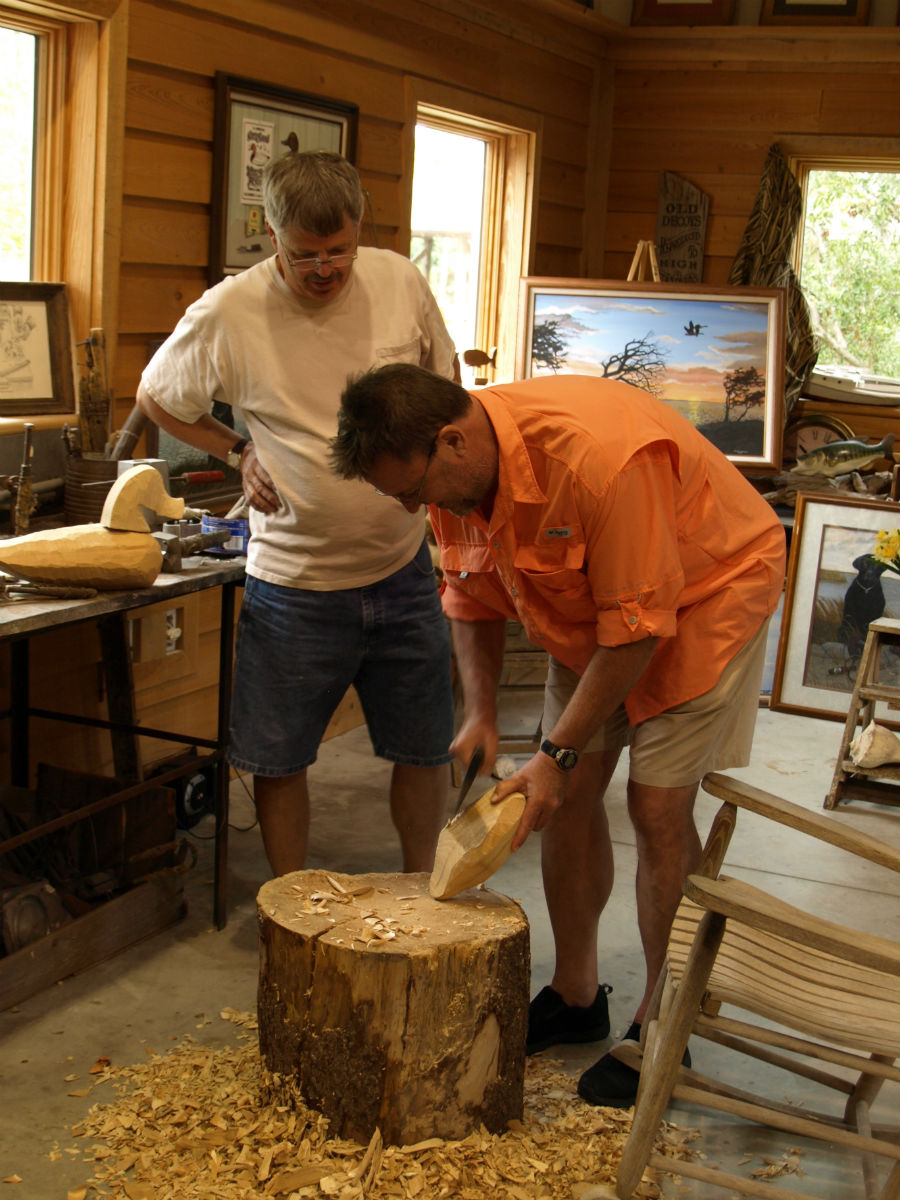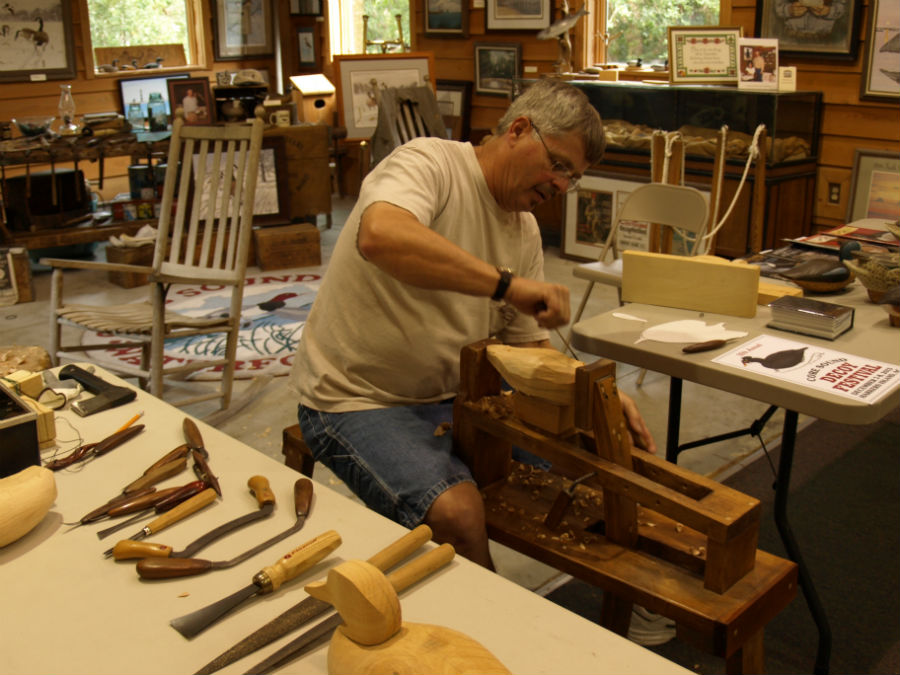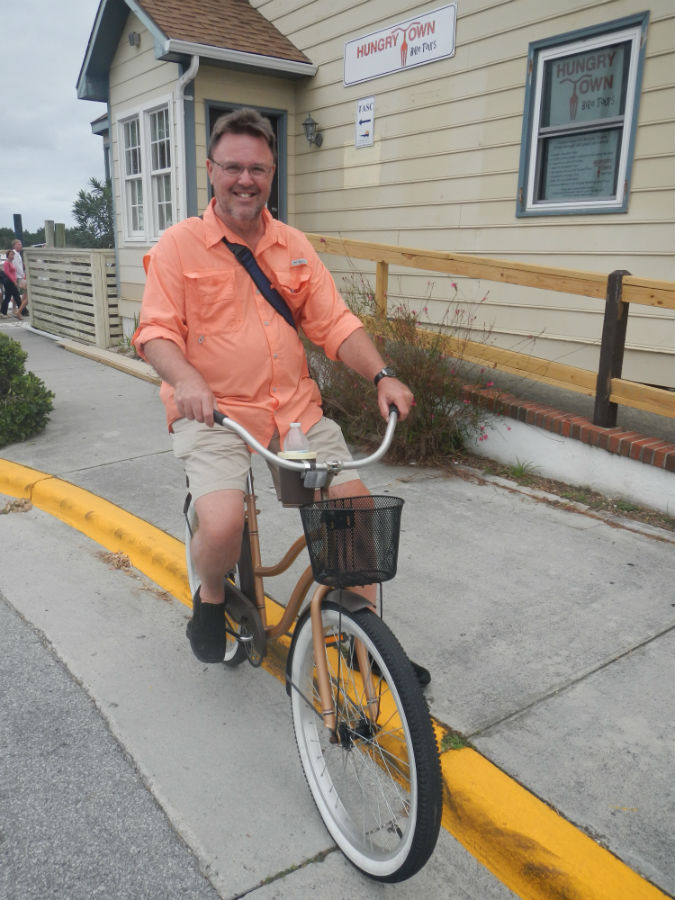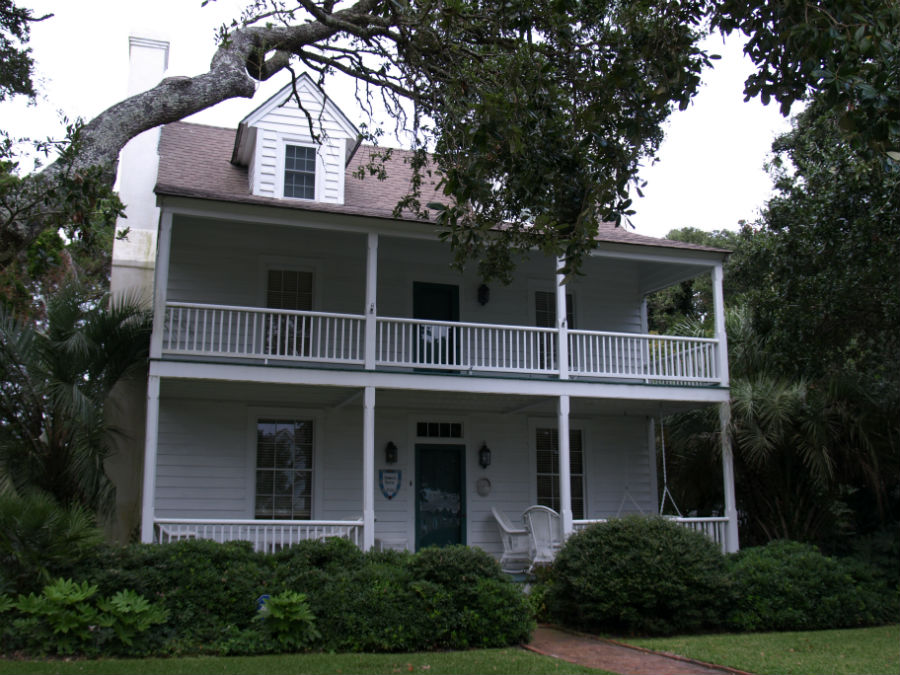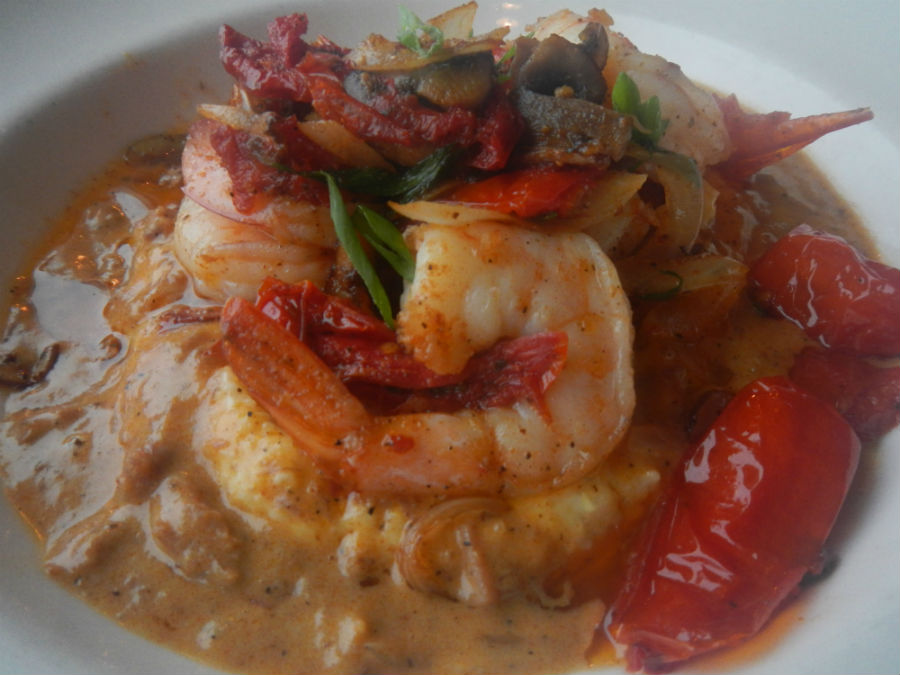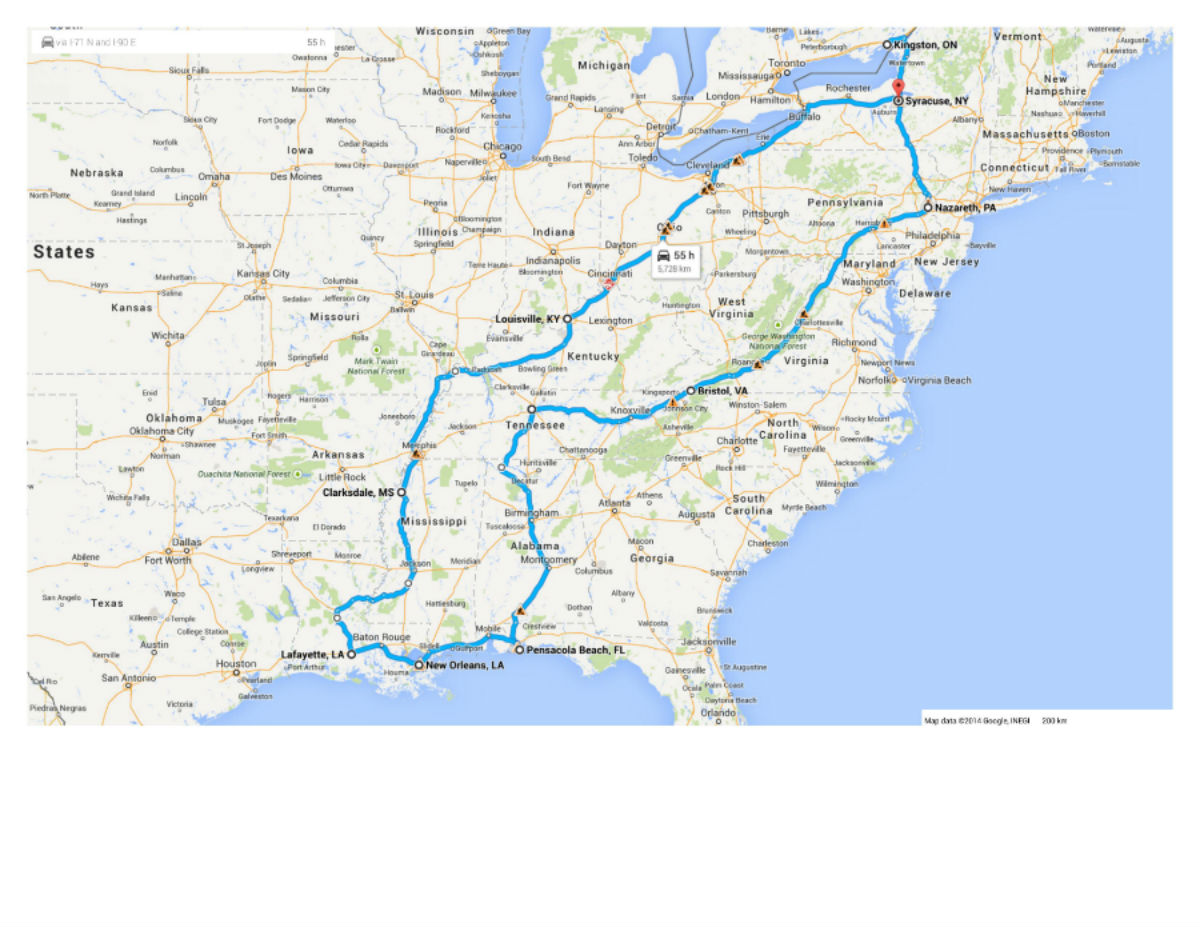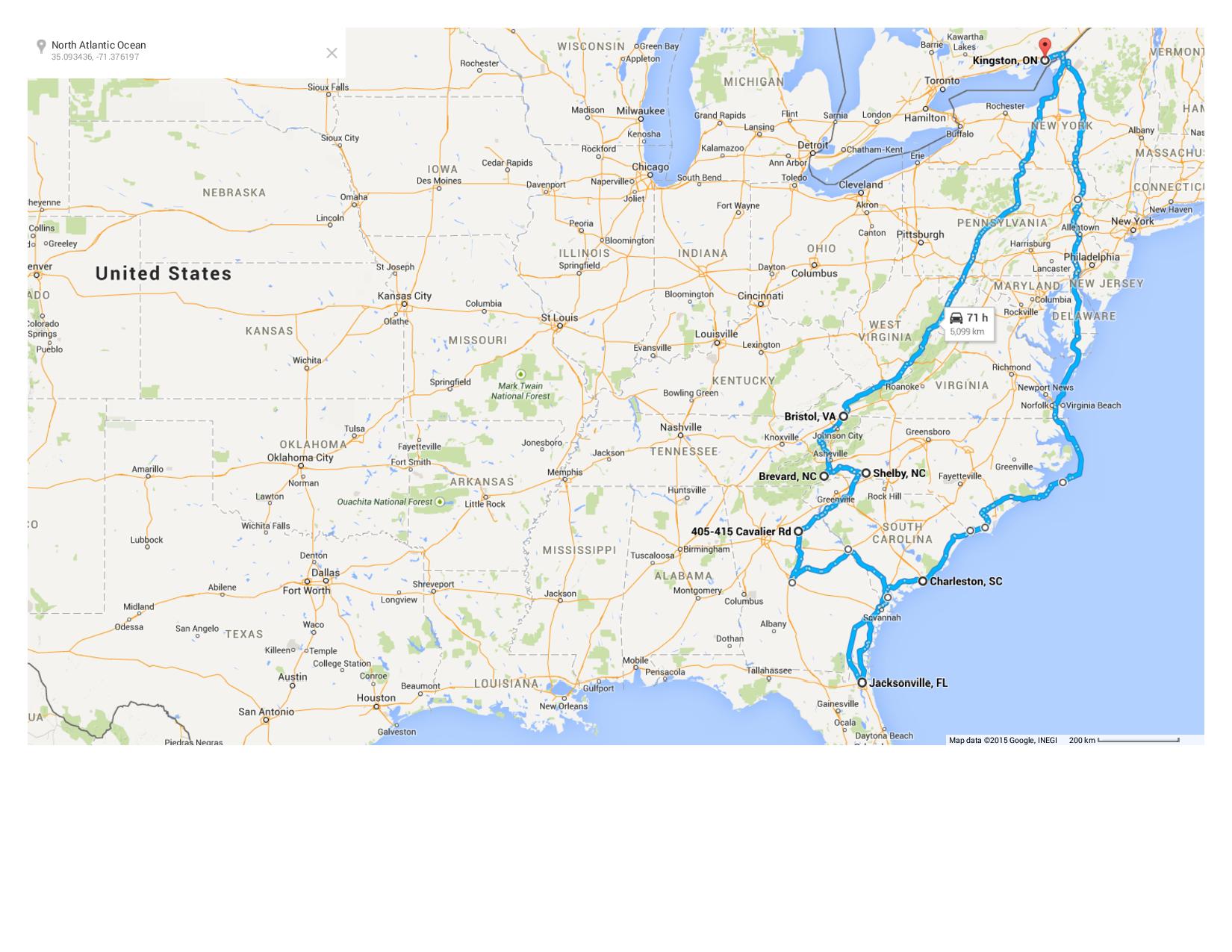Tearing ourselves away from the beauty of Ocracoke was no small task. It did, however, involve one of our favourite activities of this coastline trip: a ferry ride.
It’s a two-hour ($15 USD) ferry ride across the waters of the Pamlico Sound to Cedar Island on the mainland of North Carolina. The area is better known to locals as Down East – a collection of 13 different maritime communities holding dear to the traditions of the seafaring life. Their past is a colourful history of whaling, fishing, hunting, quilting and the craft of decoy carving.
It’s the decoys that drew us to the Core Sound Waterfowl Museum & Heritage Center (right next to the ferry that crosses to the uninhabited shores of Cape Lookout National Seashore). Craig tried his hand at chopping away at a piece of juniper (a wood called white cedar in the north) under the tutelage of an amused Walter “Brother” Gaskill, one of the country’s best decoy carvers.
Brother instructed Craig to just chop away anything that “doesn’t look like a duck.” Afterwards Brother pulls out cutting knives and files to try to repair the damage, all the while smiling as he tells us – in a thick Down East brogue – about a local group of carvers who work with the museum to revive the art of carving decoys.
The second level of the museum – a building designed to resemble a cross between a large hunting lodge and a coastal life saving station – is like rummaging through your grandmother’s attic. Displays for each Down East community are filled with duck decoys, handmade quilts, black and white photos and household items.
From the top level there is a viewing platform with a great view of the Cape Lookout lighthouse, the only light station in North Carolina that stays lit night and day.
We found more maritime history (and, of course, more on Blackbeard) in the beautiful village of Beaufort (population: 4,000) at the North Carolina Maritime Museum. The region’s proud history of life saving stations, fishing, boatbuilding and piracy (okay, maybe proud is not the right word on that last one) is explained in detail.
But it was on two wheels that we really discovered the beauty of Beaufort (and it is very beautiful). We pedalled beach bikes from Hungry Town Bike Tours, a local bike tour company run by Betsy and David Cartier, two transplants from the northeast.
David gave us a snapshot of Beaufort: “OPALs. Older people, active lifestyle.”
Think a garden club with 160 active members. Wide, quiet streets that are perfect for biking or walking. Gorgeous homes that range from cottages to mansions. A stone’s throw across the harbour is the Rachel Carson Reserve and the historic Fort Macon, a well-preserved Civil War era fort. There are no chain stores in sight.
David has a theory on this. “Beaufort has stayed isolated, so it’s kept its charm. These houses were built by shipbuilders, so they can withstand the storms. You’ll see a lot of homes with two porches – one up and one down – it’s a West Indian style imported by the sailors.”
Indeed, Beaufort is made for those with a curiosity about history, food and culture and enough zip to pedal around town (easy pedalling along a very flat landscape and very light traffic on the side streets).
And about that “food” part … After pedalling and sightseeing all day we were primed for finding another seafood meal and, as it turns out, we ate dockside at the Front Street Grill at Stillwater, enjoying meals that were among the best of our trip to date.
The amazing Shrimp & Grits were made with stone ground cheese grits (flavoured with heavy cream and a sharp Vermont cheddar), sundried tomatoes, mushrooms, onions and tasso (a gravy made from a base of ham drippings). Craig opted for the same-day catch of yellowfin tuna (cooked rare) in soft wheat tortillas and served with sides of black beans, rice and fried plantains. The restaurant has indoor seating, outdoor seating on the deck (dog-friendly) and a great view of the sunset.
It was a perfect way to end a perfect day!


